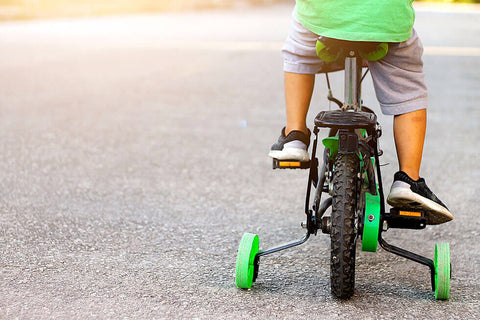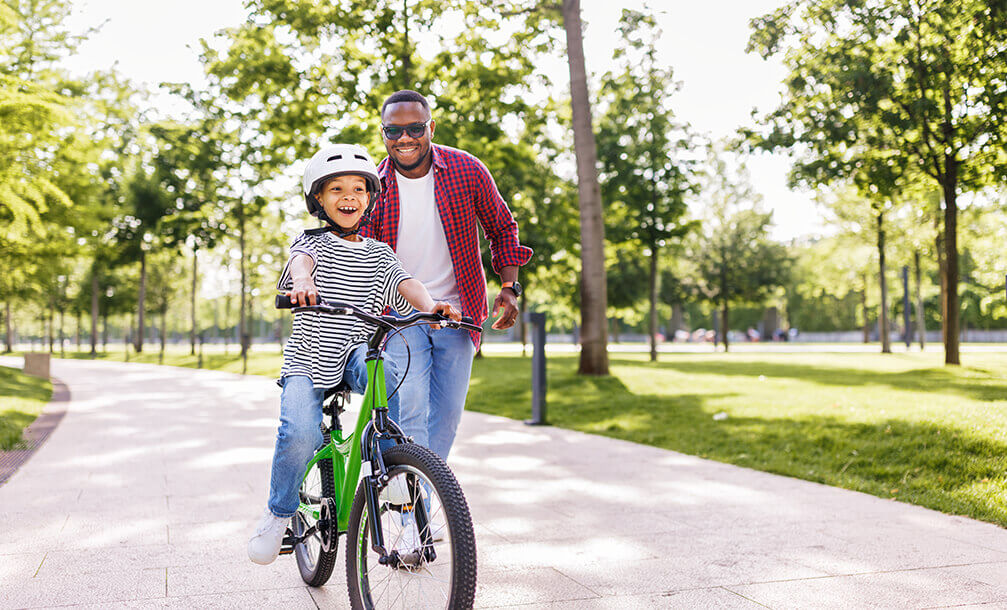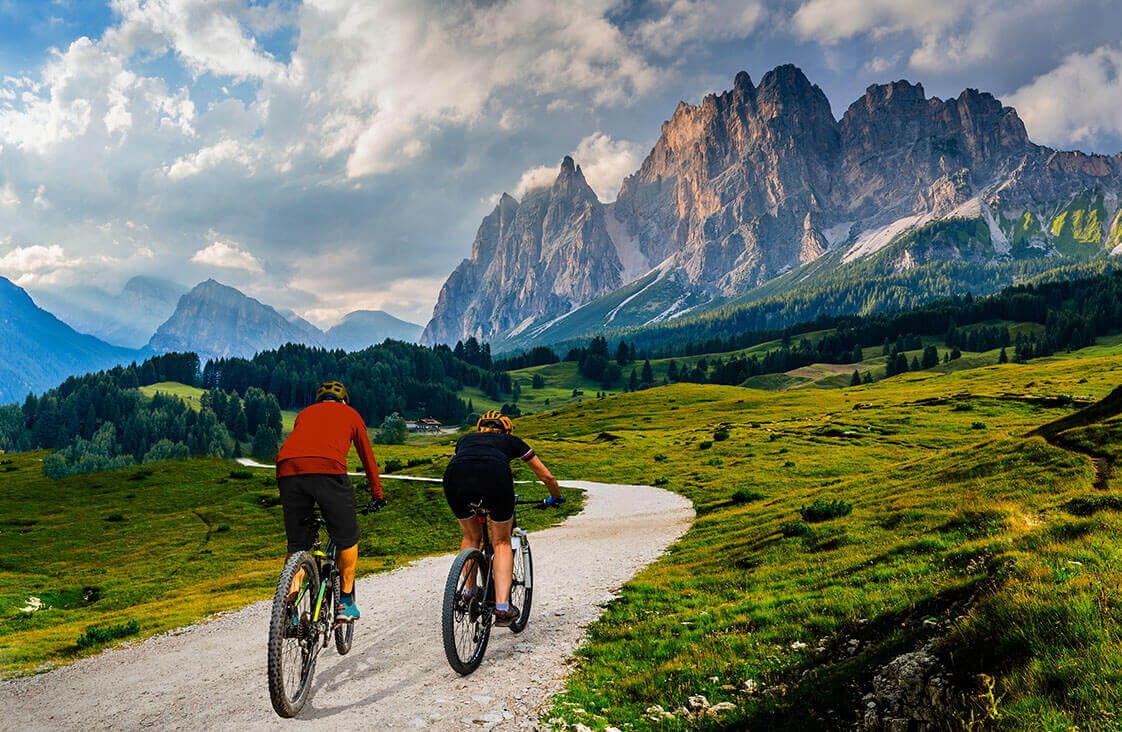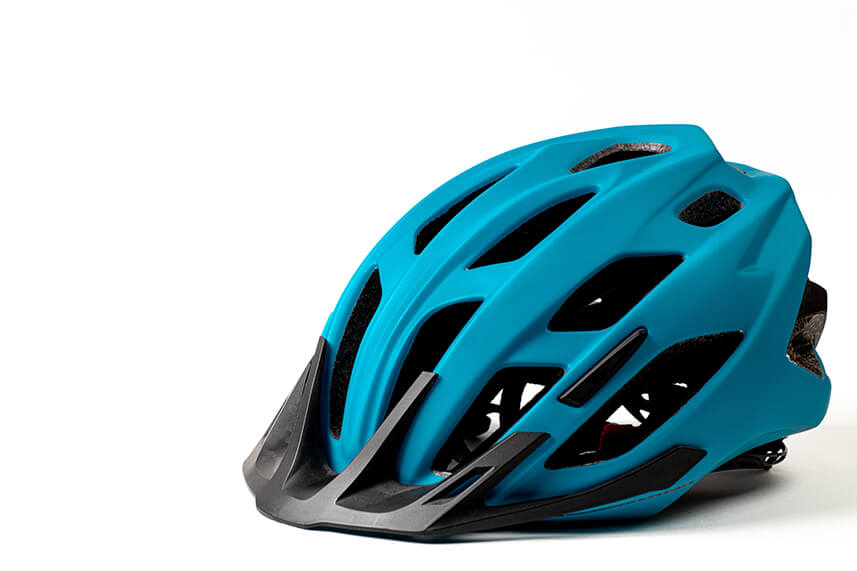Remember the feeling of freedom and joy when you first experienced learning to ride a bike? The wind in your hair, the exhilarating sense of speed, and the satisfaction of mastering a new skill? If you or someone you know is looking to embark on this exciting journey, you’ve come to the right place! We have developed a comprehensive, step-by-step guide to help beginners learn the art of cycling. From choosing the right bike and gear to mastering balance, steering, and braking, our guide will provide all the essential information and tips for a successful and enjoyable learning to ride a bike experience.
So, are you ready to embark on this adventure and discover the joy of cycling? Let’s get started on the road to mastery, one pedal stroke at a time!
Key Takeaways
- Choose the right bike and gear for a comfortable ride.
- Master balancing, steering, braking techniques to gain confidence on two wheels.
- Interact confidently with other cyclists & traffic to ensure a safe cycling experience!
Choosing the Right Bike and Gear

The first step in your journey to becoming a confident cyclist is choosing the right bike and gear. A comfortable and safe learning experience begins with a bike that fits you well and allows you to stand over the middle of the bike with plenty of clearance from the top tube. For children who are just starting, consider using training wheels for added support. Equally important is selecting the right gear, such as a well-fitting helmet and appropriate clothing that won’t restrict your movements while pedaling. Steer clear of long, loose skirts, loose pants, and open-toed shoes to avoid any potential accidents.
If you like having your phone on you, then you will want to choose a quality phone mount that will allow you to keep your phone mounted to your handlebars so you can keep your phone within view on your rides. Be sure to find a mount and phone case that offers wireless charging so you won't have to worry about a dead phone.
Once you’ve found the perfect bike and gear, it’s time to make some essential adjustments for a comfortable ride. Ensure the brake levers are conveniently placed for easy access and check the seat post for proper height adjustment. With these preparations in place, you’ll be ready to embark on your first ride and experience the thrill of cycling!
Preparing for Your First Ride

You need to make a few preparations before embarking on your first ride. Start by checking the brakes and tires to ensure they’re functioning correctly and inflated to the correct pressure.
Next, adjust the seat height and handlebars for a comfortable fit. Ideally, your feet should be flat on the ground when seated, with a slight bend in the knees. This will allow you to maintain control and balance while you learn.
Finally, find a large, flat area like a tennis or basketball court or a parking lot – the perfect place to practice your skills in a straight line without the distractions of heavy traffic or obstacles.
Checking Brakes and Tires
Before heading out, make sure your brakes work properly and your tires are correctly inflated. Squeeze the brake levers to check that they are engaging properly. The correct tire pressure for your bike will depend on the type and size of the tires, so refer to the manufacturer’s instructions for the best results.
Taking these precautions will not only help you enjoy riding more, but also help you avoid riding in unsafe conditions on your journey.
Adjusting Seat Height and Handlebars
A comfortable and safe riding experience depends on correct seat height and handlebar position. To adjust the seat height, lower it until you can comfortably have both feet flat on the ground while seated. This position will help you maintain control and balance as you learn to ride. When adjusting the handlebars, loosen the bolt on the stem and move the spacers up or down to achieve the desired height. Don’t forget to tighten the bolt securely after making your adjustments to ensure a safe ride.
With the seat and handlebars adjusted to your liking, it’s time to practice mounting and dismounting the bike. Start by leaning the bike towards you while applying the brakes. This will help you get used to the feel of the bike and make it easier to mount and dismount smoothly and safely.
Mastering the Basics: Balance and Steering
Mastering balance and steering is a pivotal part of learning to ride a bike. A great way to develop these skills is by starting with a balance bike or removing the pedals from a regular bike. This allows you to focus on balancing and steering without the added distraction of pedaling. The foundation of your cycling success lies in your ability to maintain balance on two wheels while navigating turns and avoiding obstacles.
To practice balance and steering, begin by pushing off with your feet and maintaining balance as you glide along the ground. This will help you get comfortable with the feel of the bike and how it responds to your movements. As you become more confident in your ability to balance, you can start practicing turns while gliding, gradually increasing the complexity of your maneuvers to hone your steering skills.
Starting with a Balance Bike or Removing Pedals
Balance bikes, ideal for beginners, help children learn balancing and steering quickly without the distraction of pedaling. Alternatively, you can remove the pedals from a regular bike to focus on mastering balance and steering. This method is particularly effective for 16’’ bikes and larger, but can also be used with smaller bikes. By eliminating the need for pedaling, children can focus on developing their balance and steering skills, laying the foundation for a successful cycling experience.
To practice balancing and steering, have the child:
- Push off with their feet and attempt to maintain balance as they glide along the ground.
- Encourage them to look ahead and anticipate turns, as this will help them maintain their inner balance and direction.
- As they become more confident in their ability to balance and steer, they can progress to more complex maneuvers and longer distances.
Practicing Gliding and Steering
To practice gliding and steering, follow these steps:
- Start by pushing off with your feet and maintaining balance as you glide along the ground.
- Keep your raised foot forward to maintain a forward weight bias and help you stay steady while riding.
- As you become more confident, challenge yourself to coast for longer periods of time.
- Practice turning to the right and left.
- When you feel confident, try doing large figure eights, making wide turns in both directions for an extra challenge.
Stay alert and look far ahead for any road debris or hazards to stay safe on the road. As you practice gliding and steering, focus on maintaining your balance through momentum and being mindful not to over-correct with steering inputs. With practice and patience, you’ll soon master the art of gliding and steering and be ready to progress to the next stage of learning to ride a bike.
Developing Confidence in Braking
Developing confidence in braking is a fundamental skill for beginner cyclists. Proper braking ensures that you can safely control your bike in various situations, from navigating turns to stopping quickly in an emergency.
By learning to apply even pressure on both brakes and practicing different braking techniques, you’ll build confidence in your ability to control the bike and ensure a safe and enjoyable cycling experience.
Applying Even Pressure on Both Brakes
For smooth and controlled stops, it’s important to learn how to apply even pressure on both brakes. Using both the front and rear brakes evenly will help you stay in control of the bike and prevent skidding or tipping over.
For beginner cyclists, practicing braking off the bike is a great way to get comfortable with the braking system. Here’s how:
- Walk alongside your bike and slowly push it along the street.
- Practice pulling the brakes to slow the bike down and stop.
- This will help you develop the muscle memory needed to apply even pressure on both brakes when it’s time to ride.
Practicing Braking Techniques
Practicing different braking techniques can help you build confidence in your ability to control the bike. To slow down, gradually stop pedaling and press down firmly on the brakes. Take small steps! Practice stopping every 15 to 20 feet until you become comfortable doing it. With enough practice, you will be able to do this with ease and confidence.
As you become more proficient in braking, strive for a smooth, controlled stop that’s not too abrupt or jerky. By mastering various braking techniques, you’ll be better prepared to handle any situation on your bike, from navigating tight turns to reacting quickly in an emergency without having to lose control.
Learning to Pedal and Ride

After mastering balance, steering, and braking, the next step is to learn pedaling and riding. This stage involves starting with one foot on the ground, gaining momentum, and maintaining balance while using the left pedal and its counterpart to propel yourself forward.
As you become more comfortable with pedaling, you can start to explore longer distances and more challenging terrain, building your cycling skills and confidence along the way.
Beginning with One Foot
To start pedaling, follow these steps:
- Place one foot on the ground and the other foot on the pedal in the two o’clock position.
- Push off with your foot on the ground and maintain your balance as you begin to pedal.
- As you practice this technique, focus on maintaining your balance and taking it slow to ensure success.
Regular practice will help you develop the coordination and stability needed to ride confidently on two wheels.
Gaining Momentum and Maintaining Balance
As you become more comfortable with pedaling, work on gaining momentum and maintaining balance while riding. Pedal steadily and fluidly to make the most of your efforts and avoid sudden spurts of speed or braking, which can impede your progress.
To stay balanced while riding, follow these steps:
- Keep your raised foot forward.
- Anticipate turns by easing off the pedal and coasting gracefully through the turn.
- Resume pedaling when you come out of the turn.
By following these steps, you can maintain balance and ride smoothly.
Practicing these techniques will help you develop the skills necessary to ride with confidence and control, enabling you to tackle more challenging rides and explore new cycling adventures.
Overcoming Common Challenges
Beginner cyclists may face common challenges like dealing with road hazards and interacting with other cyclists and traffic. By learning how to safely navigate these situations and developing the skills to handle various cycling scenarios, you’ll be better equipped to overcome these challenges and continue to enjoy the thrill of cycling.
Developing the skills to handle various cycling scenarios is key to overcoming these challenges. Knowing how to do this is key.
Dealing with Road Hazards
Road hazards, such as potholes and debris, can pose a threat to cyclists, especially beginners. To safely navigate these hazards, follow these tips:
- Stay alert and look far ahead for any potential obstacles.
- Slow down and adjust your riding position as needed to maintain control of your bike.
- Avoid collisions with obstacles by swerving or maneuvering around them.
By following these tips, you can safely navigate road hazards and enjoy your cycling experience.
By anticipating road hazards and responding appropriately, you can ensure a safer and more enjoyable ride.
Interacting with Other Cyclists and Traffic
For cyclists of all levels, it’s important to know how to interact with other cyclists and traffic. As a beginner, it’s crucial to follow the same rules of the road as other vehicles, such as stopping at stop signs and red lights, yielding to pedestrians, and riding in the same direction as traffic. It’s also important to signal your turns clearly and confidently to let other road users know your intentions.
By maintaining a safe distance from vehicles and other obstacles, you can ensure a secure ride and avoid potential accidents. Developing these skills will not only help you stay safe on the road, but also enable you to interact confidently with other cyclists and traffic, making your cycling experience more enjoyable.
Summary
In conclusion, learning to ride a bike is an exciting and rewarding journey that opens the door to a world of freedom, adventure, and fun. By following our step-by-step guide, you’ll master the essentials of cycling, from choosing the right bike and gear to developing balance, steering, braking, and pedaling skills. Along the way, you’ll also learn to overcome common challenges faced by beginner cyclists, such as dealing with road hazards and interacting with other cyclists and traffic.
So, whether you’re a first-time rider or helping someone else discover the joy of cycling, remember that patience, practice, and perseverance will lead you to success. Embrace the adventure, enjoy the ride, and soon you’ll be pedaling confidently into a world of new experiences and possibilities!
Frequently Asked Questions
How long does it take to learn to ride a bike?
Learning to ride a bike is an achievable task, taking between 45 minutes and several weeks depending on the child’s age, coordination development, and previous exposure.
Patience is key!
What age should a child be able to ride a bike?
Your child is ready to learn to ride a bike between the ages of 4 and 8 when they’ve developed enough coordination, agility, and balance.
Every child is different, however, so you are the best judge of when your child is ready.
How should a beginner learn to ride a bike?
Start by ensuring you have the right fit for the bike, practice hopping on and off the bike, become comfortable with braking, learn how to glide and maintain your balance, then use your dominant leg to push off and start pedaling.
What should I look for when choosing the right bike and gear?
Choose a bike that fits your size and is comfortable, and make sure you have the proper safety equipment like a helmet and appropriate clothing.
Be sure to find gear that won’t limit your movements while pedaling.
How can I practice and improve my balance and steering skills?
Practice your balance and steering by starting with a balance bike or removing the pedals from a regular bike and focus on gliding and steering.
Push off and maintain balance while turning for better results.




Leave a comment
This site is protected by hCaptcha and the hCaptcha Privacy Policy and Terms of Service apply.